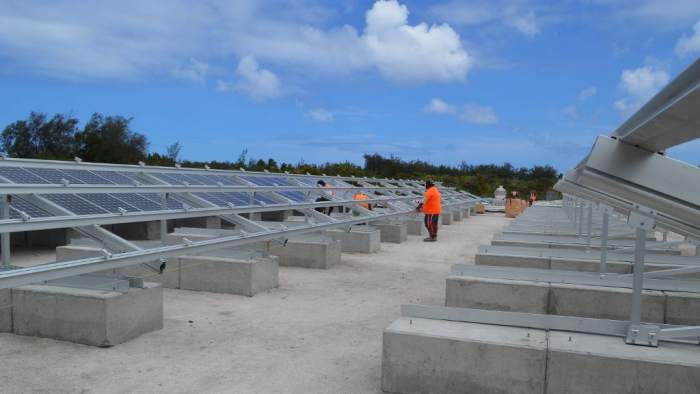
Image: Asia Development Bank
The Green Climate Fund (GCF) is kicking in $12 million as a grant to help finance part of the Cook Islands Renewable Energy Sector Project.
The Cook Islands, situated halfway between New Zealand and Hawaii, is comprised of 15 islands scattered over a huge area of the South Pacific – around two million square kilometres. Most of the Cook Island’s 17,800 permanent residents live on the largest island, Rarotonga, which also attracts more than 100,000 tourists a year.
The nation’s electricity supply used to be almost exclusively sourced from diesel-based generation, with the fuel shipped from New Zealand. According to the Asian Development Bank, diesel cost the Islands NZ$34.6 million in 2012 – representing 25% of total imports value and 9% of gross domestic product. 27% of diesel imported was being used for electricity generation.
In 2012, electricity comprised 25 percent of total household expenditure and for businesses, up to 30 to 40 percent.
The Cook Islands Renewable Energy Sector Project, co-financed by Asian Development Bank (ADB), the European Union and the Government of Cook Islands, was established in October 2014 to reduce reliance on fossil fuels through the use of solar power.
All the northern atolls had solar power systems installed by the end of 2015 and work is continuing on installations in the Southern Cook Islands, which will see construction of up to five more solar plants. The next plant to be built will be on the island of Aitutaki.
GCF’s funding will go towards installation of 3MW/12MWh of battery storage that will enable the addition of 6 MW of solar capacity to be added to Rarotonga’s grid.
“The project aims to increase energy security in the Cook Islands in an environmentally sustainable manner, while increasing the share of renewable energy in the country’s energy mix without negatively affecting the grid,” said ADB Pacific Department Energy Specialist Woo Yul Lee.
The Green Climate Fund was established within the framework of the UNFCCC to support the efforts of developing countries in responding to the challenges of climate change. In 2016, Australia was re-elected unanimously to lead the GCF this year. The Australian Government committed AUD $200 million to the Green Climate Fund over 2015-18.
Another large-scale battery storage system is soon to be constructed on the island of Rarotonga. The 5.6 MWh system also has an Australian link – it will be installed by New South Wales based MPower, who we mentioned last week in connection with a couple of other projects. The energy storage project will support the 1MW Te Mana Ra solar PV facility at Rarotonga International Airport, which has been operating since 2014.

 RSS - Posts
RSS - Posts



Speak Your Mind